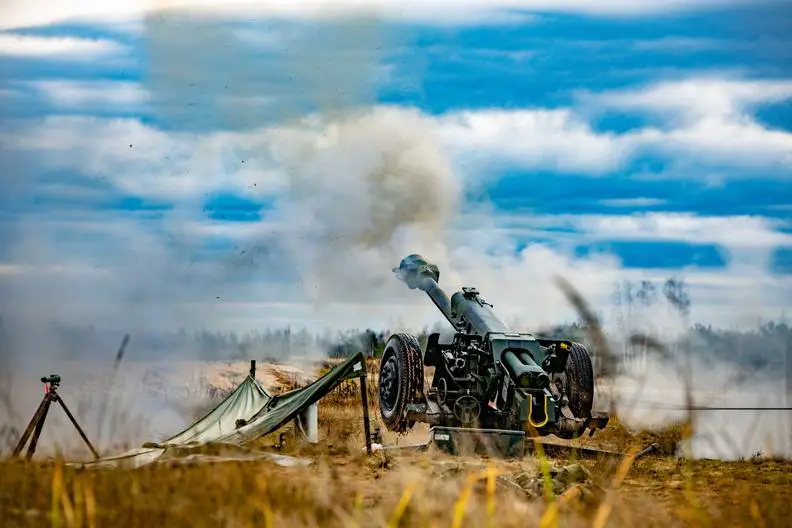German news site Deutsche Welle reported that Estonia has appealed to Germany for approval of deliveries to Ukraine of D-30 122mm howitzers manufactured in Germany. the D-30 used by the former East German army and after the German reunification in the 1990s, some of the D-30 howitzers were exported to Finland, which then handed them over to Estonia in 2009. A total of 49 D-30 howitzers were purchased from Finland in 2009 to replace previously used 105mm howitzers. Estonia has requested permission from Berlin to send artillery weapons to Ukraine, as required by German export legislation. Finland, which is not a member of NATO, is also obliged to allow the supply of weapons under an agreement with Germany.
The 122-mm howitzer D-30 (GRAU index 2A18) is a Soviet howitzer that first entered service in 1960. It is a robust piece that focuses on the essential features of a towed field gun suitable for all conditions. The D-30 has a maximum range of 15.4 kilometers, or over 21 km using RAP ammunition. With its striking three-leg mounting, the D-30 can be rapidly traversed through 360 degrees. Although no longer manufactured in the nations of the former Soviet Union, the D-30 is still manufactured internationally and is in service in more than 60 countries’ armed forces. The D-30 is noted for simplicity of maintenance by its users; reputedly there are no special tools, all jobs can be done with a wrench and large hammer.

Soviet 122 mm howitzers used different ammunition to 122 mm guns, although there was some compatibility. The standard 122 mm howitzer shell weight of 21.8 kg was retained, with a metal cartridge case holding variable propelling charges. Cartridge and shell are loaded separately; this means that the shells have to be hand-rammed by a man to the right of the breech with a ramming rod. The D-30 could fire the older M-30 ammunition; however, new shells were also introduced, eventually including a rocket assisted projectile with a range of 21.9 km. A more effective High Explosive (HE) shell was developed, as well as smoke, illumination and chemical filled projectiles. the anti-tank role is important; there is a HEAT shell capable of penetrating 460 mm of steel armour plate.
The maximum rate of fire of the D-30 is 6–8 rounds per minute, and about 75 rounds per hour. Based on reloading speeds of similar guns using separate charges, solo re-laying, and given a stable emplacement, semi-automatic breech and no long lanyard, and assuming concurrent lay adjustment during reloads, then it probably is when in the hands of a competent detachment. However, 5-6 rounds per minute may be more realistic with a poorly trained gun crew. A central jack is powered by hand-operated hydraulics. This jack is lowered while the wheels are raised to permit two of the stabiliser legs to be swung 120° rearwards. The mounting is then lowered and the ends of the legs spiked to the ground. This mounting provides for quick traversing to fire in any direction.
















